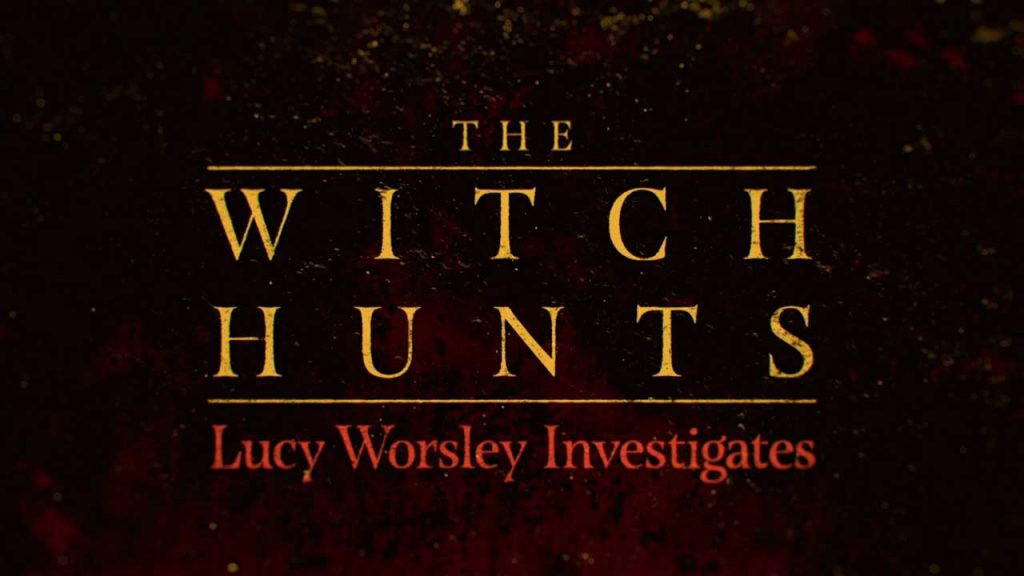Lucy Worsley Investigates – The Witch Hunts: We all think we know what we mean by a witch, but behind the clichés of pointy hats and broomsticks lies a terrifying history that’s been largely forgotten. Four hundred years ago, thousands of ordinary people, the vast majority of them women, were hunted down, tortured and killed in witch hunts across Scotland and England. Lucy Worsley investigates what lay behind these horrifying events.
She begins her investigation in North Berwick, a seaside town not far from Edinburgh, where the witch hunting craze began. The story goes that, in 1590, a coven of witches gathered here to cast a spell to try to kill the King of Scotland, James VI. Using an account from the time called Newes from Scotland and other first-hand sources, Lucy uncovers a web of political intrigue that led to a woman called Agnes Sampson, a faith healer and midwife, being investigated. She was accused of witchcraft and interrogated at Holyrood Castle by King James himself before being tortured and executed.
Agnes was caught in a perfect storm: hardline Protestant reformers wanting to make Scotland devout, a king out to prove himself a righteous leader, and a new ideology which claimed the Devil was actively recruiting women as witches. Under torture, Agnes gave the names of her supposed accomplices, some 59 other innocent people, resulting in the first successful large-scale witch hunt in Scotland. Its brutal success made it the model for trials rolled out across Scotland and England for the next hundred years.
Lucy Worsley Investigates – The Witch Hunts
A witch-hunt, or a witch purge, is a search for people who have been labeled witches or a search for evidence of witchcraft. The classical period of witch-hunts in Early Modern Europe and Colonial America took place in the Early Modern period or about 1450 to 1750, spanning the upheavals of the Reformation and the Thirty Years’ War, resulting in an estimated 35,000 to 50,000 executions. The last executions of people convicted as witches in Europe took place in the 18th century. In other regions, like Africa and Asia, contemporary witch-hunts have been reported from sub-Saharan Africa and Papua New Guinea, and official legislation against witchcraft is still found in Saudi Arabia and Cameroon today.
In current language, “witch-hunt” metaphorically means an investigation that is usually conducted with much publicity, supposedly to uncover subversive activity, disloyalty, and so on, but with the real purpose of intimidating political opponents. It can also involve elements of moral panic or mass hysteria.




